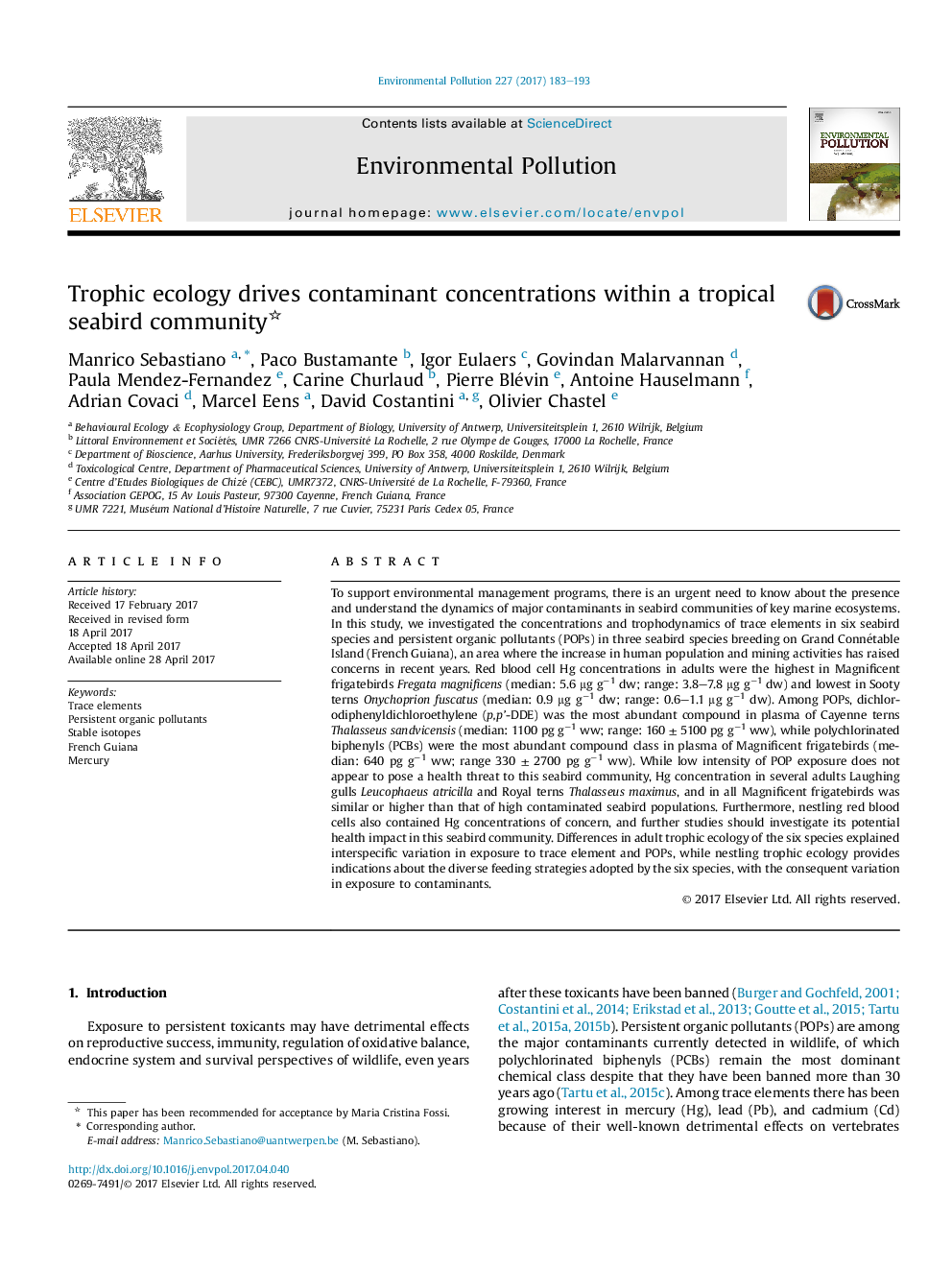| کد مقاله | کد نشریه | سال انتشار | مقاله انگلیسی | نسخه تمام متن |
|---|---|---|---|---|
| 5749138 | 1619146 | 2017 | 11 صفحه PDF | دانلود رایگان |
- POPs and trace elements were studied in a tropical seabird community.
- Trace element concentrations widely vary among the six investigated species.
- Hg concentrations were strongly associated with carbon and nitrogen isotopes.
- POPs were generally low in all three species analysed.
- Hg impact on these species and the community as a whole should be investigated.
To support environmental management programs, there is an urgent need to know about the presence and understand the dynamics of major contaminants in seabird communities of key marine ecosystems. In this study, we investigated the concentrations and trophodynamics of trace elements in six seabird species and persistent organic pollutants (POPs) in three seabird species breeding on Grand Connétable Island (French Guiana), an area where the increase in human population and mining activities has raised concerns in recent years. Red blood cell Hg concentrations in adults were the highest in Magnificent frigatebirds Fregata magnificens (median: 5.6 μg gâ1 dw; range: 3.8-7.8 μg gâ1 dw) and lowest in Sooty terns Onychoprion fuscatus (median: 0.9 μg gâ1 dw; range: 0.6-1.1 μg gâ1 dw). Among POPs, dichlorodiphenyldichloroethylene (p,p'-DDE) was the most abundant compound in plasma of Cayenne terns Thalasseus sandvicensis (median: 1100 pg gâ1 ww; range: 160 ± 5100 pg gâ1 ww), while polychlorinated biphenyls (PCBs) were the most abundant compound class in plasma of Magnificent frigatebirds (median: 640 pg gâ1 ww; range 330 ± 2700 pg gâ1 ww). While low intensity of POP exposure does not appear to pose a health threat to this seabird community, Hg concentration in several adults Laughing gulls Leucophaeus atricilla and Royal terns Thalasseus maximus, and in all Magnificent frigatebirds was similar or higher than that of high contaminated seabird populations. Furthermore, nestling red blood cells also contained Hg concentrations of concern, and further studies should investigate its potential health impact in this seabird community. Differences in adult trophic ecology of the six species explained interspecific variation in exposure to trace element and POPs, while nestling trophic ecology provides indications about the diverse feeding strategies adopted by the six species, with the consequent variation in exposure to contaminants.
125
Journal: Environmental Pollution - Volume 227, August 2017, Pages 183-193
